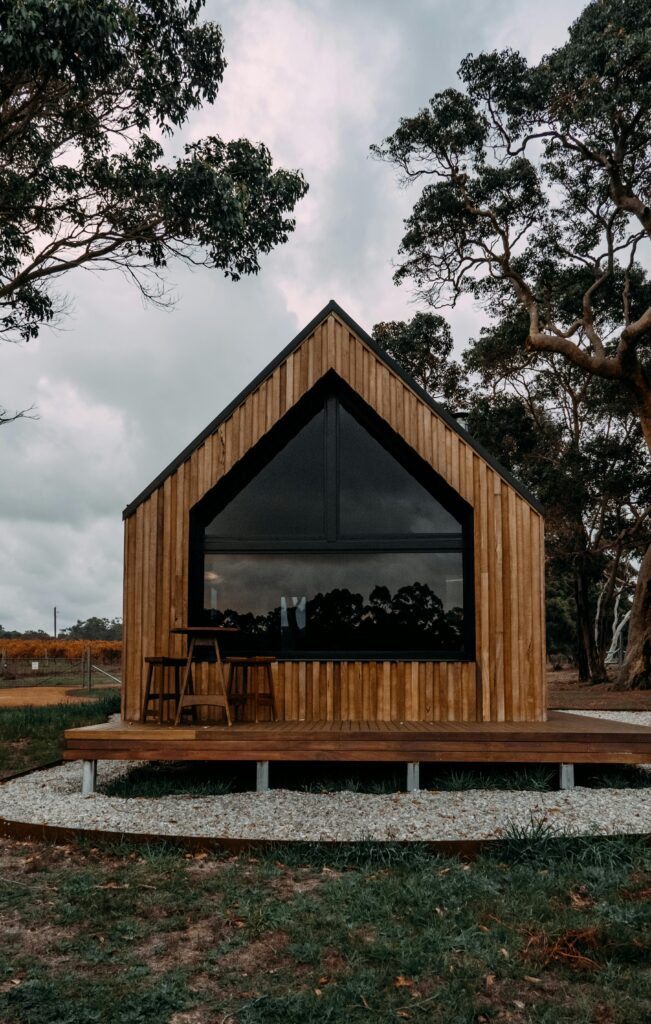Tiny Homes, Big Loans: Financing Options for Alternative Housing

The tiny home movement has gone from a quirky lifestyle choice to a legitimate housing solution. Whether driven by affordability, minimalism, or sustainability, more people are downsizing into homes that measure under 400 square feet. But while the houses themselves are small, the financing challenges can feel massive.
Unlike traditional homes, tiny houses don’t always fit neatly into standard mortgage categories. That doesn’t mean financing is impossible—it just means you need to explore alternative paths. Here’s what to know if you’re dreaming of going tiny.
Why Tiny Homes Are Different
Banks and lenders are comfortable with traditional mortgages because the collateral—a standard home on land—fits established guidelines. Tiny homes, however, present unique challenges:
- Unconventional Structure: Many are built on trailers, which makes them more like RVs than houses.
- Zoning and Codes: Not all municipalities recognize tiny homes as permanent dwellings.
- Lower Price Tag: With prices ranging from $30,000 to $100,000, tiny homes often fall below the minimum loan amount many banks are willing to process.
These factors make traditional mortgages rare for tiny homes. Instead, buyers often turn to alternative financing.
Financing Options for Tiny Homes
1. Personal Loans
Personal loans are one of the most common ways to finance a tiny home. Approval is usually based on your credit score and income rather than the property itself.
- Pros: Flexible, fast approval, no need for home appraisal.
- Cons: Higher interest rates than mortgages, shorter repayment terms.
Best for: Buyers with strong credit who want to secure financing quickly.
2. RV or Manufactured Home Loans
If your tiny home is built on wheels, it may qualify as an RV or manufactured home. Some lenders offer loans specifically for these categories.
- Pros: Designed for mobile housing, longer terms than personal loans.
- Cons: Must meet strict certifications (e.g., RVIA approval for RV loans).
Best for: Tiny homes on trailers intended for mobility.
3. Builder Financing
Some tiny home builders offer in-house financing or partnerships with lenders.
- Pros: Streamlined process, often tailored to tiny home buyers.
- Cons: May have higher interest rates or stricter conditions.
Best for: Buyers working directly with established tiny home companies.
4. Home Equity Loans or HELOCs
If you already own property, you can tap into your home equity to finance a tiny home.
- Pros: Lower interest rates than personal loans.
- Cons: Puts your main home at risk if you can’t repay.
Best for: Homeowners adding a tiny house as an accessory dwelling unit (ADU).
5. Savings and Hybrid Approaches
Some buyers use a mix of savings and smaller loans to keep debt manageable. With lower overall costs, tiny homes are more realistic to purchase outright compared to traditional housing.
Beyond Financing: Costs to Consider
Buying a tiny home isn’t just about the structure. Factor in:
- Land: Unless you already own property, you’ll need a place to park or build.
- Utilities: Hookups for water, electricity, and sewage can add thousands.
- Insurance: Policies vary depending on whether it’s considered a home, RV, or something in between.
- Zoning and Permits: Local regulations may require adjustments—or even prevent placement altogether.
Tiny homes promise freedom from oversized mortgages and the chance to live simply. But financing them isn’t always simple. From personal loans to RV financing, there are creative paths to ownership—each with pros and cons.
The key is to match your financing strategy to your vision: Do you want a stationary home on a foundation? A mobile unit for travel? An ADU on your property? Answering these questions first will guide you toward the right loan type.
With smart planning, even the smallest home can fit into your biggest dreams.
Unlock Full Article
Watch a quick video to get instant access.








